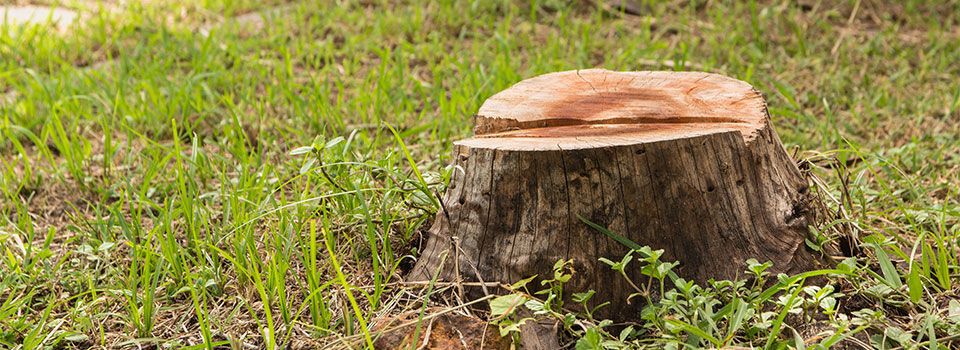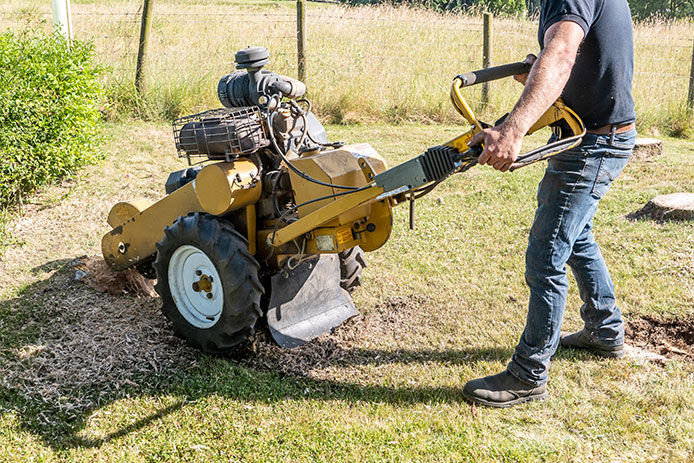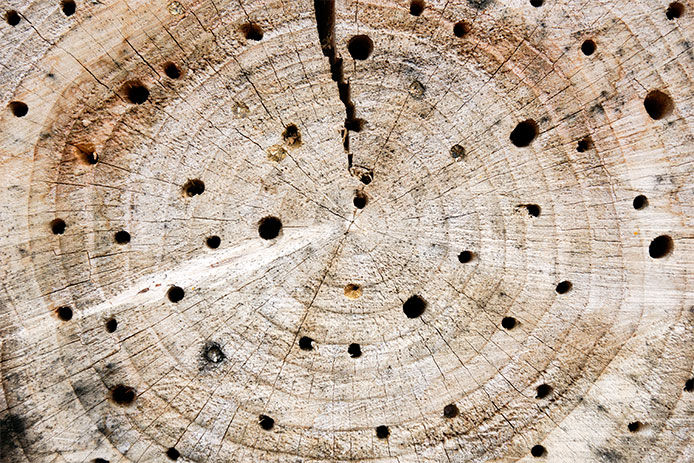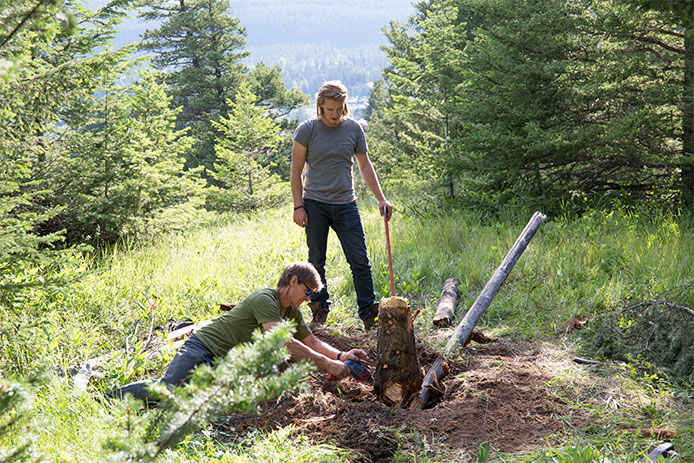While do-it-yourself projects can be fun and fulfilling, there is always a potential for personal injury or property damage. We strongly suggest that any project beyond your abilities be left to licensed professionals such as electricians, plumbers, and carpenters. Any action you take upon the information on this website is strictly at your own risk, and we assume no responsibility or liability for the contents of this article.
How to Remove a Tree Stump

Healthy and mature trees add value to a property through both increased beauty and cooling shade. It's best to remove a tree rather than let it pose a risk to your home or a neighbor's property when disease or storm damage threatens it. Once the tree service has done its work, a substantial stump may still sit in your yard. Before you can install a shed or extend your driveway in the place of the old tree, you'll need to remove the tree stump. Tree services sometimes charge half as much as the entire removal cost just for stump removal at the end. Handling this process on your own is much safer than cutting down a mature tree, but it still comes with a few risks depending on the method you choose.
Grinder

The tree company or stump removal service will use a large grinder to physically chip up the stump until it's slightly below the soil level, then cover it. It is a relatively quick and easy process, but it requires heavy equipment and skilled operation. You can do it yourself by renting a stump grinder from a local Do it Best tool rental center. Keep in mind that grinding leaves behind roots that will rot, creating a slight depression after a few years. You can fill this depression in with mulch or soil.
Start by clearing away any soil, rocks, and debris around the edges of the stump. Dig with a shovel and mattock until all the major roots are exposed, where they join the trunk. Use a chainsaw to cut off as much of the trunk as possible and to sever any roots that are above the soil line. Start the stump grinder and use its cutting blade to start chipping away at the stump from one side, focusing on the exposed roots first. Once the stump has been removed down to the soil level, cover what's left with mulch or soil.
Chemical

Chemical methods are all slower than burning or grinding the stump, but they cost less and pose less of a hazard than other techniques. With some patience and the right materials, you can accelerate the natural decomposition process from as long as a decade to as short as six months. Not all chemicals are safe for this purpose. For best results, use stump treatments from a hardware store. Epsom salts, nitrogen fertilizer, and potassium nitrate are all alternatives that work nearly as well. Avoid bleach or other types of salt since they will damage the surrounding soil.
Drill large holes into the top of the stump with a spade bit 1/4 to 1/2 inch in width. Use larger bits on larger stumps to speed up the breakdown. The deeper you can get the holes, the faster the stump breaks down. Pour water into the holes, then shake or pour in the chemical you're using. Don't mix chemicals since they can react in unexpected ways. It's generally acceptable to use one treatment per year even if they're different without incompatibility issues since the chemical will slowly dissipate over time. Water the stump regularly and cover it with a dark tarp to further speed up this process.
Burning

Make sure the area around the stumps is free of flammable materials for at least 15 to 20 feet, including other trees. Stumps right next to your home or other trees should be removed with other methods. You'll need to pick up a chemical treatment commonly known as "Stump Out" for this process. It helps increase the porosity of the wood so it can absorb the kerosene and burn steadily. As with any other chemical treatment, drill large holes and add the "Stump Out" without any additional water. After letting the chemical absorb, pour kerosene into the holes and around the edge of the stump. Water the area around the stump so falling sparks don't light up leaves or grass, then light the stump. Keep it within view the entire time it burns and add more kerosene as needed to keep the wood just smoldering, not blazing.
Digging

The most laborious method for removing a stump is digging it out by hand. However, there's no risk of fire spreading across the property and no need to wait for chemicals to act. You'll need a range of tools, including a crowbar or pry bar, a mattock, a sharp shovel, a splitting maul or heavy axe, and a chainsaw. The key is to excavate around the stump base first as deep as you can. Split any large roots can find off of the main stump, then use the ax to split it into pieces. Keep digging, splitting, and prying at the stump and roots until they're below the soil level, then cover the rest.
Disposing of the stump's remains can be tricky. Piling them up in a hidden corner of the yard will result in rich mulch and soil after a few years. If you can't do that, try looking for yard waste disposal services nearby or hauling the material off yourself to the dump.